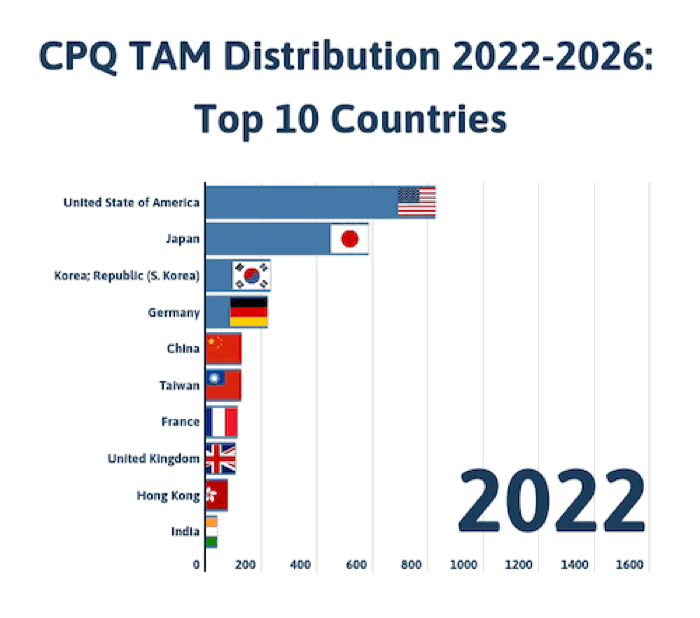Welcome to The Margin, a newsletter designed to keep you on the leading edge of monetization.
In business, the difference between being ahead of the curve or slow to adapt is anything but marginal. The Margin aims to be the most useful, timely, and incisive ping that hits your inbox all week. It includes critical research and analyst insights to inform short and long-term decision making.
Here’s what you need to know:
Research Spotlight | Declouding: Will Curiosity Inspire Action?
Are tech companies starting to regret leaving the “premises”?
- The past year has seen the curious rise of declouding: a small but growing trend of larger companies studying the effort to move applications off the cloud and run workloads on internal data centers.
- The public cloud represents greater agility, scalability, flexibility, innovation, and more, all with the promise of a cheaper per-unit price tag.
- So why would anyone want to go through the hassle of disentangling their data systems from major cloud providers like AWS, Google Cloud, and Microsoft Azure?
- Read on to find out – or download the research note here to get the full story.
A Story You Can’t Afford To Miss | Between the Lines of the OpenAI Drama
OpenAI’s boardroom shakeup dominated the news cycle for the past few weeks. Now that the dust has settled, we outline three key points that business journalists have largely overlooked when covering the dramatic turnover (and un-turnover).
On the Horizon | How big is the CPQ market?
MGI Research predicts that the market for cloud-based Configure-Price-Quote (CPQ) software will grow at a compound annual growth rate of 16% between 2022 and 2026.
- The Services CPQ market is growing even faster.
- Our upcoming CPQ Total Addressable Market (TAM) Forecast will contain valuable details about the companies, verticals, and countries that will spend the most on CPQ software over the next five years, as well as analysis of the key business and technology drivers that are shaping growth in the industry.
- Read on for a sneak preview of intriguing takeaways from the report.
Tune Into MGI | Software Valuation and M&A Outlook
Join MGI Research on Thursday, November 30 at 8am PT / 11am ET for an in-depth look at the software valuations, an evaluation of topline growth leaders vs. laggards, and our predictions for M&A activity in 2024.
You can register for the webinar here.
Now let’s dive a bit deeper.
Research Spotlight
Declouding: Will Curiosity Inspire Action?
Has cloud migration hit its peak?
For the past two decades, movement to the cloud has been a defining trend in the IT industry. But this year, some larger companies have decided they’ve had enough with the high costs and technical lock-in that typically characterize deals with major cloud providers like AWS, Google Cloud, and Microsoft Azure. More and more companies are exploring the possibility of “declouding,” or migrating back to data centers and on-premises systems.
A new MGI Research note, Declouding: Will Curiosity Inspire Action?, explores the declouding phenomenon, the factors that led to its recent uptick inpopularity, and the headwinds and tailwinds that may steer the trend toward more mainstream adoption.
Get the research note to find the answers to questions like:
- Is cost the only factor affecting interest in moving off-cloud?
- Will AI impact the investigations into declouding?
- Is declouding a real threat, or a bluff designed to bring down high costs associated with technology increasingly viewed as a table-stakes requirement?
- Can cloud providers rein in their disgruntled customers and start a new trend of “cloud re-migration”?
- And more!
Download the research note here.
A Story You Can't Afford to Miss
Between the Lines of the OpenAI Drama
Despite oversaturating the press, coverage of OpenAI’s boardroom drama largely missed three key points.
1) Microsoft CEO Satya Nadella deserves credit for taking decisive action to preserve Microsoft’s reliance on OpenAI as the heart of its AI strategy. If it wasn’t obvious before, it now is – Microsoft is all-in with OpenAI, and can’t afford for it to fail.
- Not least because of Microsoft’s $10 billion investment in the company, although it is unclear how much equity is in thatarrangement. One suspects that cloud computing services are provided in kind as a part of the deal.
- Further, Microsoft’s 49% stake shields it from IP-protection liability – making Nadella’s moves all the more critical.
- Not only did Nadella bring Sam Altman back to OpenAI, he managed to arrange a behind-the-scenes replacement of the OpenAI board.
Which brings us to the second point:
2) OpenAI’s unconventional governance structure was unlikely to succeed. It was aspirational at best, and unworkable in practicality – as the last ten days demonstrated.
- Regulation of AI, and generative AI in particular, is unresolved and neither a single for-profit (or not-for-profit) board of directors is going to manage the task.
- The newly convened board includes, without irony, a director who was resigned from the presidency of Harvard due to provocative statements regarding the aptitude of women.
3) Third, the entire episode underscores the critical nature of vendor risk management. Microsoft could not (and cannot) afford to have OpenAI go under.
- The $10 billion investment pales in comparison to the strategic bet Microsoft has placed on the company and its people.
- Users and investors in AI models and solutions such as ChatGPT will be wise to avoid the kind of risks Microsoft faced with its single-supplier strategy. And to be clear, the risk of dealing with OpenAI, for better or for worse, is not eliminated.
- The OpenAI team has now publicly stated its willingness to leave in an instant, potentially crippling the technology and its customers.
The bottom line | Managing vendor risk is an ongoing activity. The OpenAI drama is a good reminder to monitor the entirety of a vendor’s operations (finances, management, et al) on a continuous basis. This has been an ongoing focus of MGI 360 Ratings of technology suppliers.
On the Horizon

How Big Is the CPQ Market?
We’re getting ready to publish our latest MGI Research Total Addressable Market (TAM) Forecast, focusing on the size, growth trajectory, and market drivers shaping the Configure-Price-Quote (CPQ) market.
CPQ, a mini-suite of related capabilities that enable precise product configuration, accurate pricing, and rapid quote presentation, is gaining broader adoption by companies of all sizes. Primary CPQ growth drivers include:
- CRM and billing software vendors selling into small and midsize enterprises, making quoting tools accessible to more companies than ever before.
- CPQ’s value proposition makes it attractive in all economic cycles. In growth periods, CPQ makes sales more productive and increases deal sizes. In downturns, CPQ improves margins and drives sales and production efficiencies. It promises a better customer experience regardless of the macro-economic conditions.
- Growing focus on reducing revenue leakage helps drive CPQ adoption. Regardless of industry, tighter alignment of quoting, pricing, and the entire quote-to-cash process helps reduce revenue leakage by 3-5% in most organizations.
- AI/ML technologies have real potential for creative disruption and acceleration of user adoption in CPQ.
Early insights | Here are a few takeaways from the report:
- The cloud-based CPQ market is forecast to grow at a CAGR of 16% over the five-year period spanning 2022-2026. The CAGR for cloud-based + on-premises CPQ spend combined is growing much slower at an estimated 11%.
- Large companies (>$1B in yearly revenues) are expected to contribute well above 50% of CPQ spend.
- The three industries that will spend the most on CPQ software between 2022-2026 are Industrial Machinery, Automobile Manufacturers, and Technology Hardware, Storage & Peripherals.
- The US, Japan, and South Korea (at a distant third) will be the three top- spending countries in the CPQ market.
- Less than half of the spend in CPQ will be driven by a shift to subscription, while companies with a huge or meaningful impact from the Internet of Things (IoT) are expected to contribute more than three-quarters of the CPQ TAM.
Who should care | CPQ buyers, sellers, and investors who are seeking to understand the cross-currents affecting growth in their industry. Sales leaders, marketing execs, product managers, and boards of directors will be able to use the data in this report to set territories, allocate quotas, target specific companies and industries, make product roadmap decisions, and set growth objectives.
Tune In to MGI
Software Valuation and M&A Outlook
Join MGI Research for a webinar on Thursday, November 30 at 8am PT / 11am ET for a deep dive into what’s driving software valuations today and into 2024.
Topics will include:
- An overview of SaaS valuations and their underlying drivers (e.g., profitability vs. short-term growth).
- The recent hyperfocus on profitability has companies wary of making dilutive acquisitions. With that in mind, will M&A activity accelerate in 2024? Are cash-laden corporate buyers coming back into the game?
- Analysis of EV/Rev multiples and growth rates
- Evaluation of software companies’ valuation multiples, 52-week performance, revenue growth, and EBITDA margin by growth quartile
- And more!
Register for the free webinar here. We’ll see you then!

So What Have I Missed?
The Topical 20 | Our most recent and relevant research that will help you keep your finger on the pulse of AMP disciplines.
1. Going Global With E-Commerce
2. Tech Trends: Mapping the Software Industry
3. Configure-Price-Quote (CPQ) TAM Forecast 2022–2026
4. The Future of CLM Is Data-1st
5. Declouding: Will Curiosity Inspire Action?
7. Q2C Success: What Does It Take To Achieve Excellence?
8. 2024 Tech Budgets Preview — Webinar
9. Here Comes Usage! Adopting & Optimizing Consumption Business Models — Webinar
10. The Agile Billing Top 50 Webinar
11. The Agile Billing Top 50: A Buyer’s Guide
12. MGI Forecasts: Service-as-a-Business (SaaB) Software Global TAM Forecast 2022–2026
14. Survival of the Fittest: Managing Extreme Economic Uncertainty
15. The Global Tech Market Is Bigger Than You Think
16. Is Software Still Eating the World?
17. Not a Typical Recession: Making Sense of the Global Economy
18. Use Case Note™: Opencell in Agile Billing
19. 360 Rating™: Icertis in CLM
20. The 13 Deadly Sins of Agile Monetization
and 32 other Use Case Notes!
The Evergreen Archives | Curated past research that is still pertinent today.
1. Quote-to-Cash Is Dead; Long Live Prospect-to-Disclosure
2. What Every CEO Needs to Know About Subscription Business
3. Evolution of MoR into Monetization as a Service
4. Mediation 2.0: Taking on the Data Challenge in Agile Billing
6. Headless eCommerce Architecture: Is eCommerce Losing Its Head?
That’s all for this issue of The Margin. If you’ve made it this far, we’ll certainly see you next time.
Warm Wishes, MGI Research




